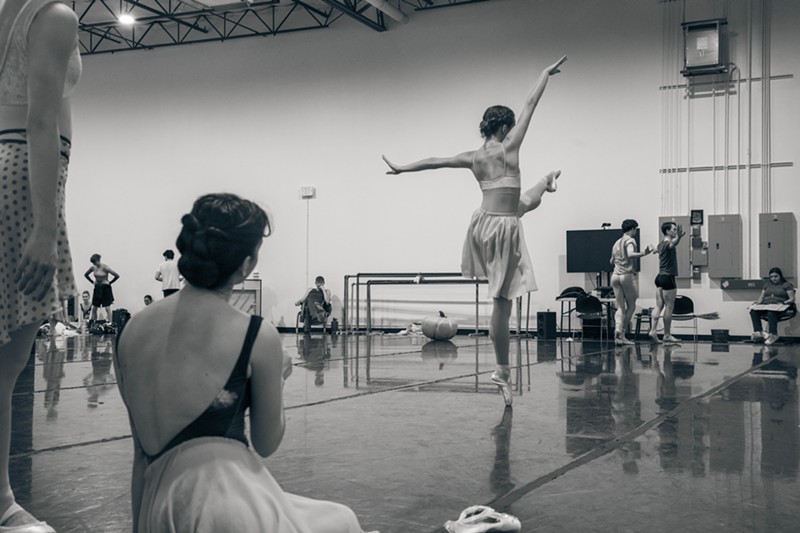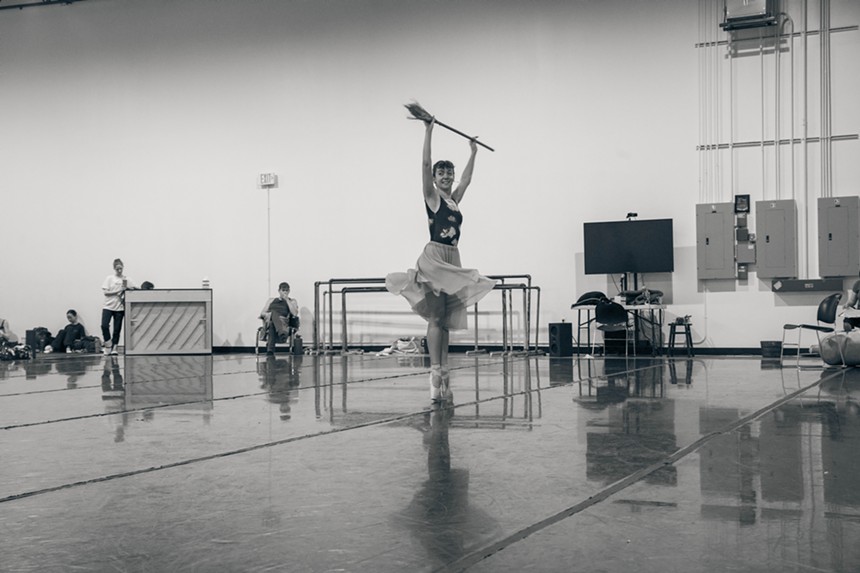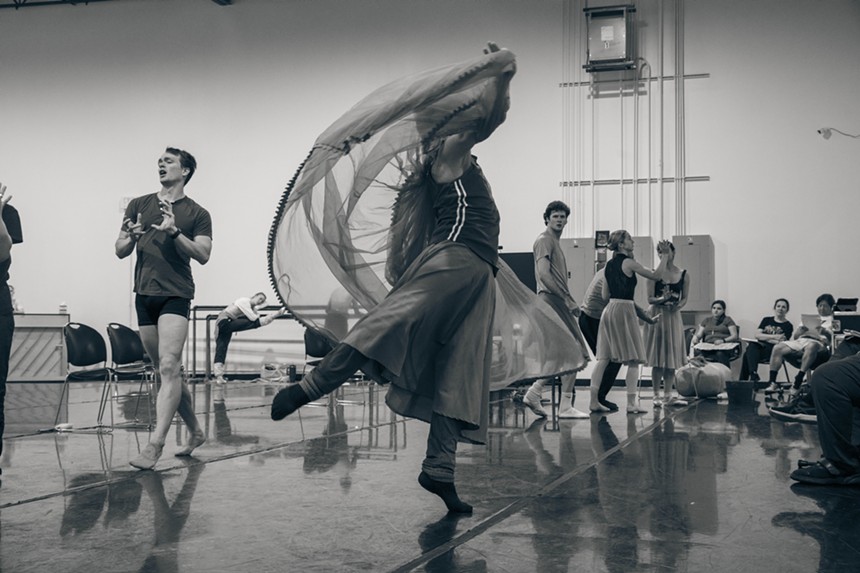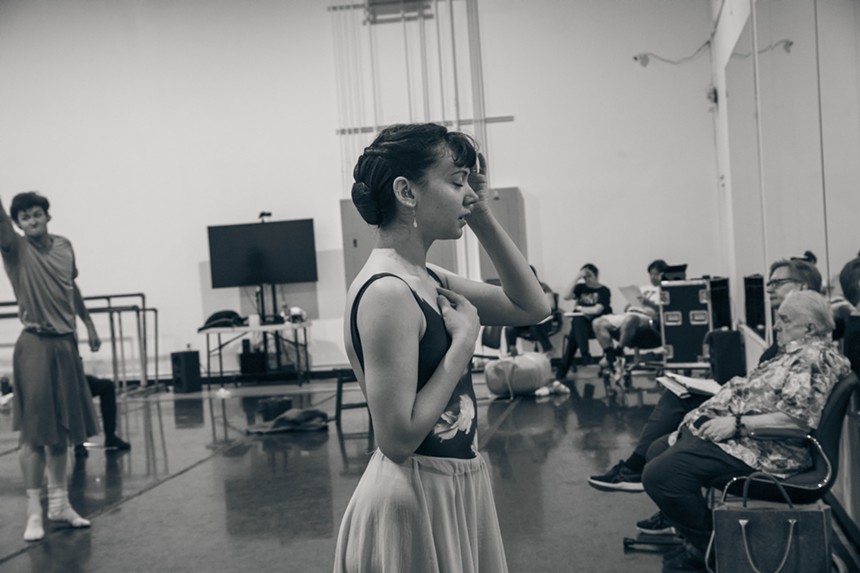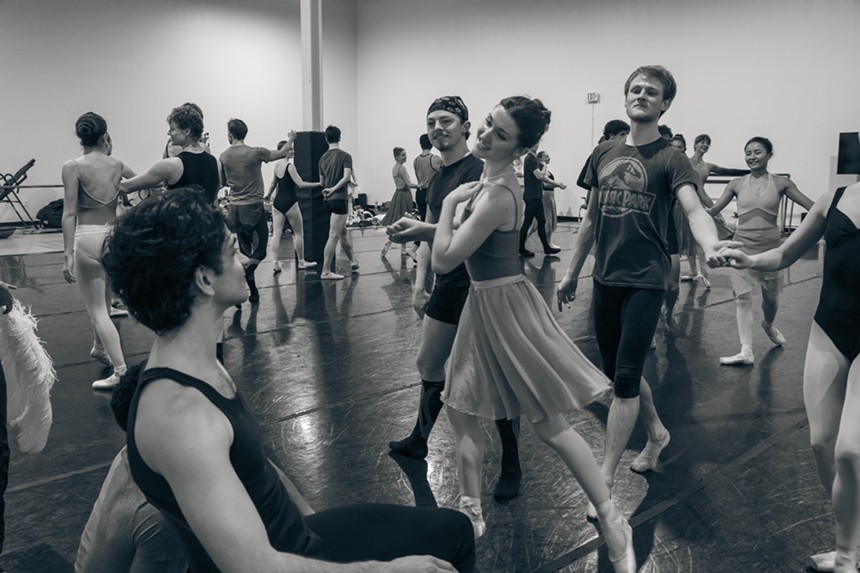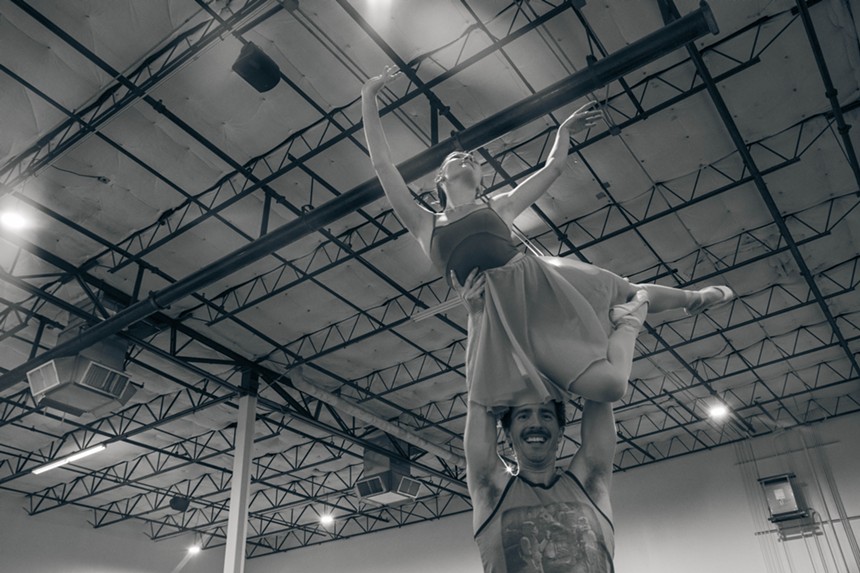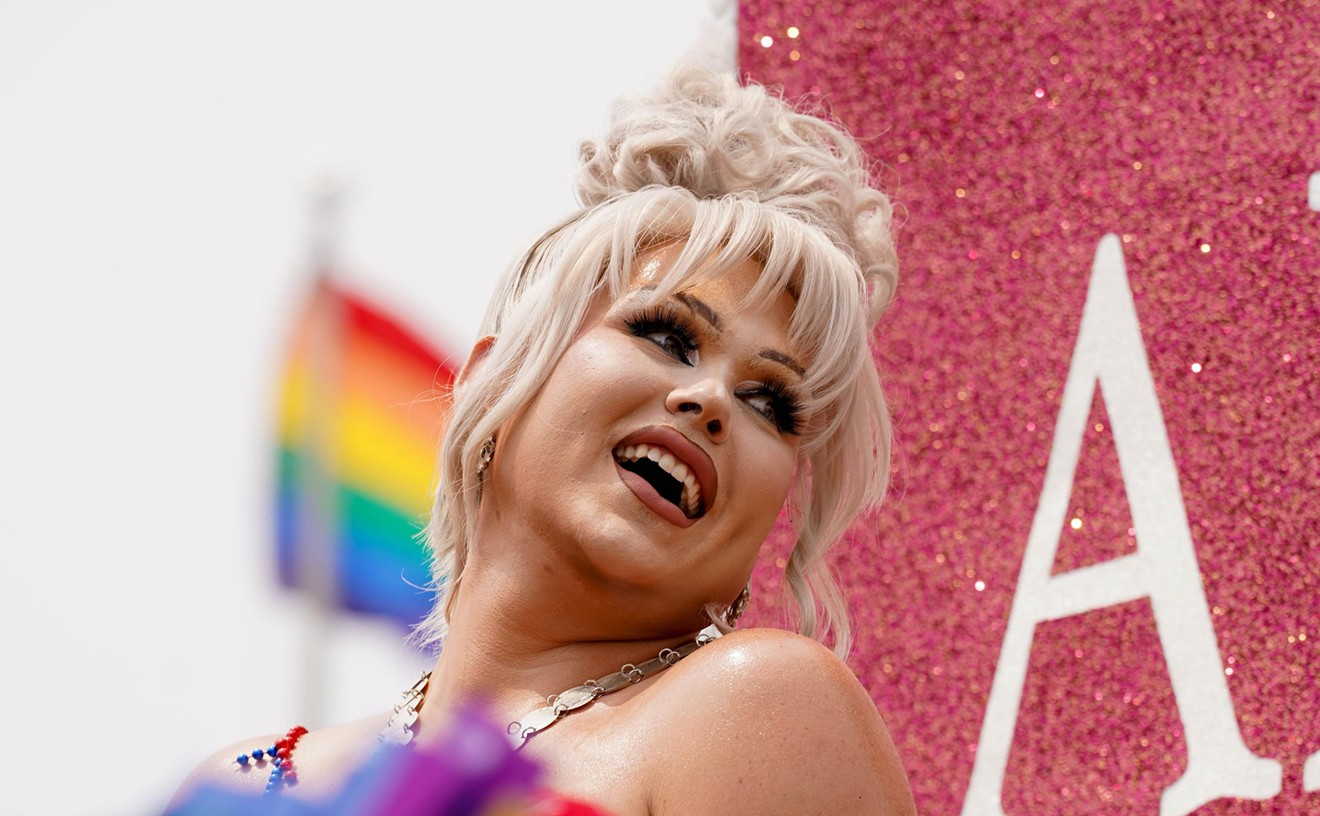When we were invited to sit in on the Texas Ballet Theater’s rehearsal for Cinderella, its first show of the upcoming season, what we didn’t know was that we’d be sitting through a run-through of the full show. This was not only a pleasant surprise, but an illuminating look at the dance’s full potential to tell a story — no words required.
There are no set pieces in the rehearsal studio, and the company uses only the bare minimum props and costumes — a broom for Cinderella to dance with during one of her solos, skirts for the ugly stepsisters (played by male dancers in drag) to comically swish around and a feather fan for the wicked stepmother to glare menacingly from behind.
But anyone with even a passing familiarity with the story won’t need more than that to follow along. The detailed, expressive choreography and the thoughtful performances from the dancers provide all the information you need. When Cinderella caresses the broom — meant to represent a dance partner in one of her fantasies — only for the straw to prick her cheek and snap her out of it, her dismay is fully communicated and dialogue would feel like overkill.
Paige Nyman, one of three dancers sharing the role of Cinderella, doesn’t view her character’s inability to speak as a disadvantage.
“What’s that saying? 90% of communication is body language?’" Nyman says. “We have all of that, and our bodies are trained to communicate at an exceptionally high level.”
Over the years, ballet has developed a sort of sign language that repeatedly pops up in choreography. An extended arm says, “Would you like to dance?” Tapping your ring finger means, “Will you marry me?”
The most universal way to convey a story, however, is with good old-fashioned acting, a skill for which ballet dancers deserve more credit.
“I think sometimes we take for granted what we notice in people’s eyes,” says Brett Young, who shares the role of the Prince. “The eyes really show a pathway to the character’s soul.”
The dancers describe the process of staying in character as having a “silent script.”
“There’s so much inner dialogue that’s happening,” says Nyman. “You have to have a thought and you have to be saying it with everything but your mouth.”
Remembering this dialogue while focusing on the precision of the choreography presents frequent challenges in a live setting. When things go wrong, the best response the dancer can have is to react to it in character.
“There have been these moments on stage where things would go wrong and my character has responded,” Nyman says. “And then there’s times onstage where things have gone wrong and Paige has responded. So there’s this separation where you have to be like, ‘How would Cinderella respond?’”
Cinderella is one of the most performed ballets in the world, and this adaptation, choreographed by Ben Stevenson, has been part of the Texas Ballet Theater’s repertoire for years.
Artistic director Tim O’Keefe performed in Cinderella at the beginning of his career when he was still in school. He describes the legacy of the show almost like an oral history.
“When you’ve been with a company for a long time, you start doing different roles and at one point you realize, ‘Man, I’ve done every part,’” O’Keefe says. “And then when you get to work with the company and the dancers, you get to give back and say what your experiences were.”
Storytelling, according to O’Keefe, is not just integral to the staged productions of ballets; it’s built into the art form itself. Every production of Cinderella, The Nutcracker or any other well-known ballet is building upon generations of experience.
“It’s great to have tradition,” O’Keefe says. "To keep it going and to feel like you’re a part of it and to know that someone will take your place and they will continue on. The ballet will continue on.”
He gestures to Nyman and Young: “Who knows what these dancers are going to do?” he says. “They could be teaching Cinderella 20 years from now and will have this information to give back to a generation of dancers.”
Ballet is often viewed as inaccessible and too abstract for the general public. O’Keefe hopes the heart and humor of Cinderella will prove them wrong.
“It’s not an elitist art form. It’s for everybody,” he says. “Dancing, acting and singing are all natural things that we all do. It’s part of who we are as humans. Even opera is a healthy, cultured yell. That’s all it is.”
Texas Ballet Theater's Cinderella runs at The Winspear Opera House (2403 Flora St.), Sept. 13–15, and at Bass Performance Hall (535 Commerce St., Fort Worth), Sept. 20–22. More information and tickets can be found on the Texas Ballet Theater website.

Audio By Carbonatix
[
{
"name": "Air - MediumRectangle - Inline Content - Mobile Display Size",
"component": "18855504",
"insertPoint": "2",
"requiredCountToDisplay": "2",
"watchElement": ".fdn-content-body",
"astAdList": [
{
"adType": "rectangle",
"displayTargets": "mobile"
}
]
},{
"name": "Editor Picks",
"component": "17105533",
"insertPoint": "4",
"requiredCountToDisplay": "1",
"watchElement": ".fdn-content-body",
"astAdList": [
{
"adType": "rectangle",
"displayTargets": "desktop|tablet"
},{
"adType": "rectangle",
"displayTargets": "desktop|tablet|mobile"
}
]
},{
"name": "Inline Links",
"component": "18349797",
"insertPoint": "8th",
"startingPoint": 8,
"requiredCountToDisplay": "7",
"maxInsertions": 25
},{
"name": "Air - MediumRectangle - Combo - Inline Content",
"component": "17105532",
"insertPoint": "8th",
"startingPoint": 8,
"requiredCountToDisplay": "7",
"maxInsertions": 25,
"watchElement": ".fdn-content-body",
"astAdList": [
{
"adType": "rectangle",
"displayTargets": "desktop|tablet"
},{
"adType": "rectangle",
"displayTargets": "desktop|tablet|mobile"
}
]
},{
"name": "Inline Links",
"component": "18349797",
"insertPoint": "8th",
"startingPoint": 12,
"requiredCountToDisplay": "11",
"maxInsertions": 25
},{
"name": "Air - Leaderboard Tower - Combo - Inline Content",
"component": "17105535",
"insertPoint": "8th",
"startingPoint": 12,
"requiredCountToDisplay": "11",
"maxInsertions": 25,
"watchElement": ".fdn-content-body",
"astAdList": [
{
"adType": "leaderboardInlineContent",
"displayTargets": "desktop|tablet"
},{
"adType": "tower",
"displayTargets": "mobile"
}
]
}
]

